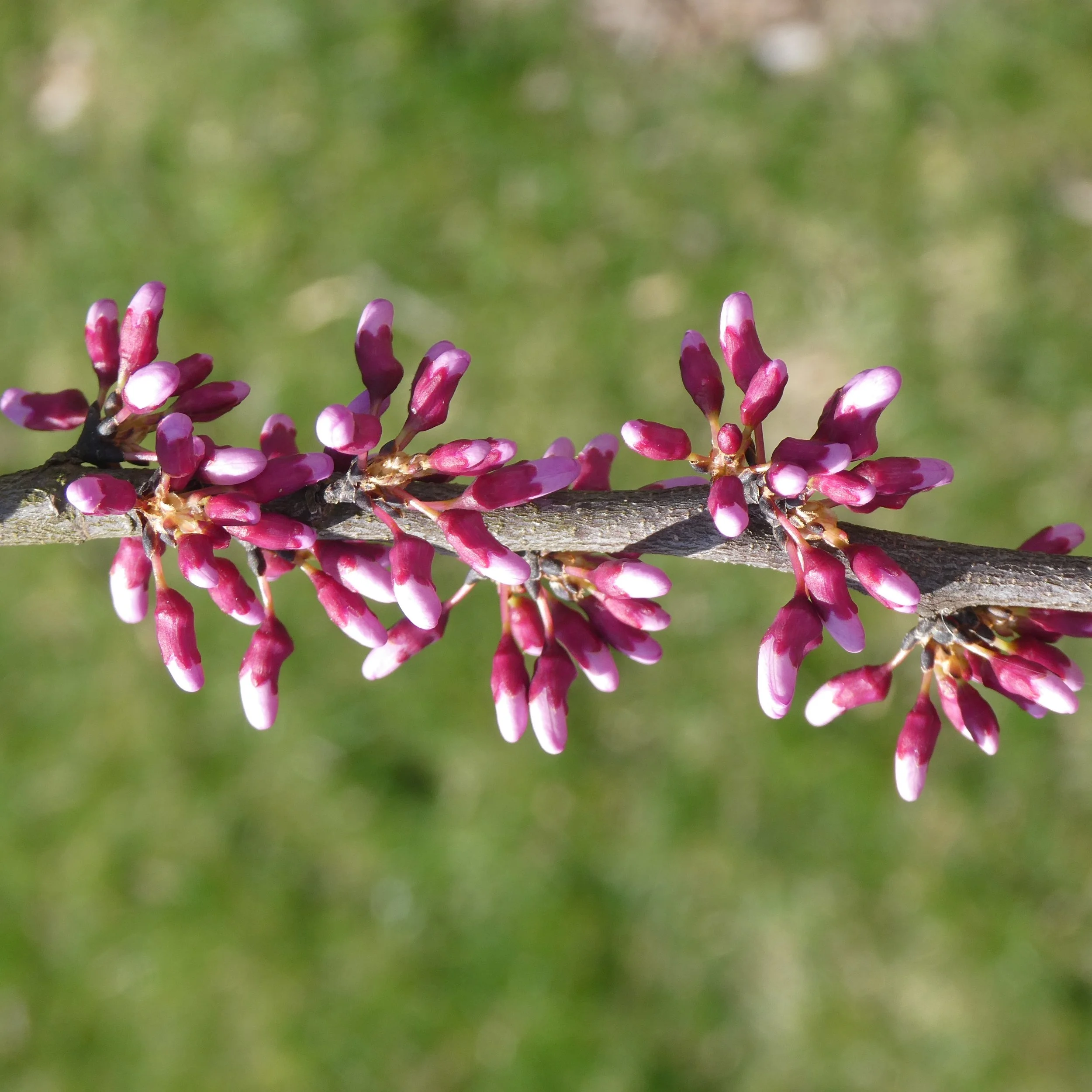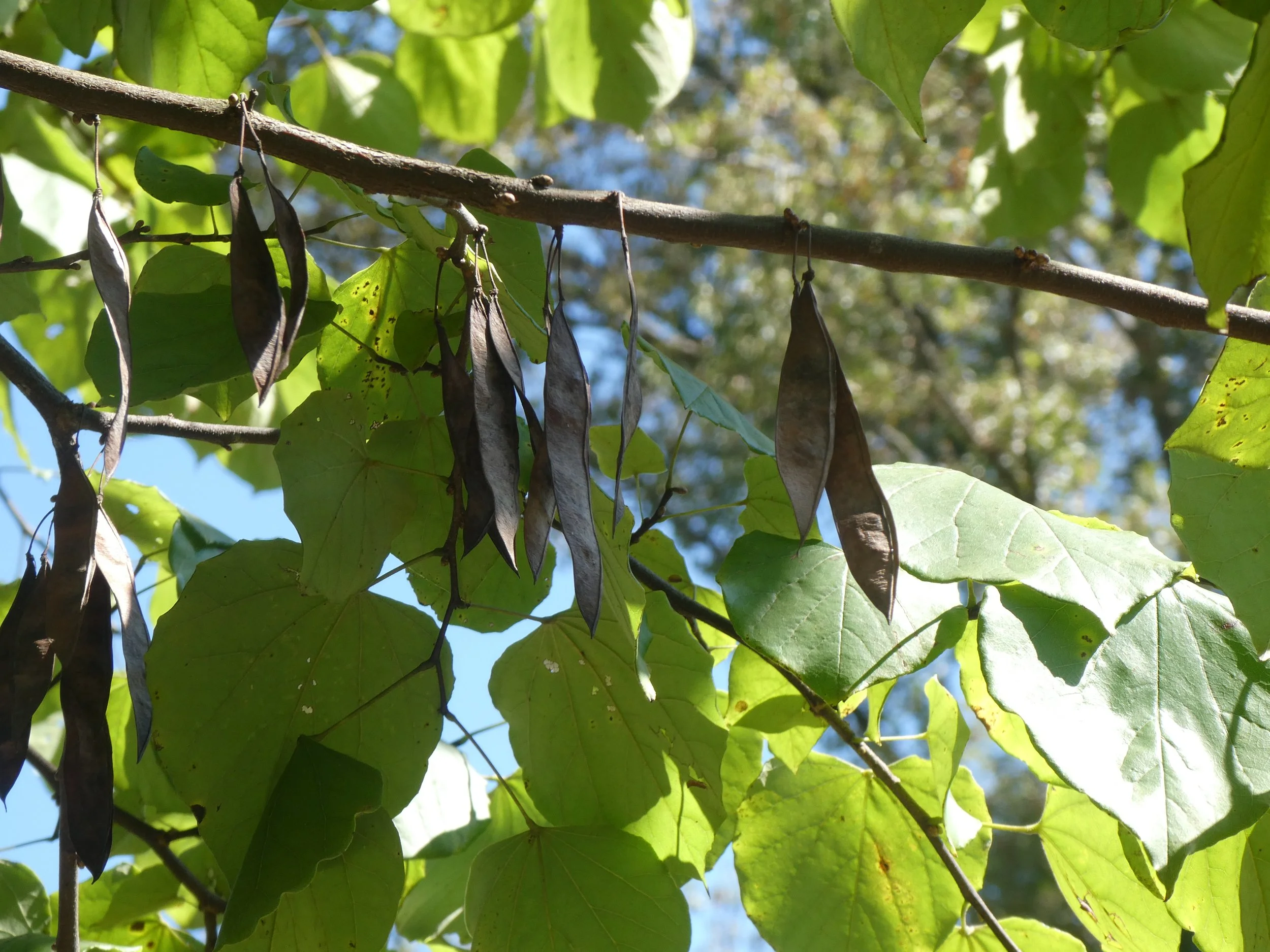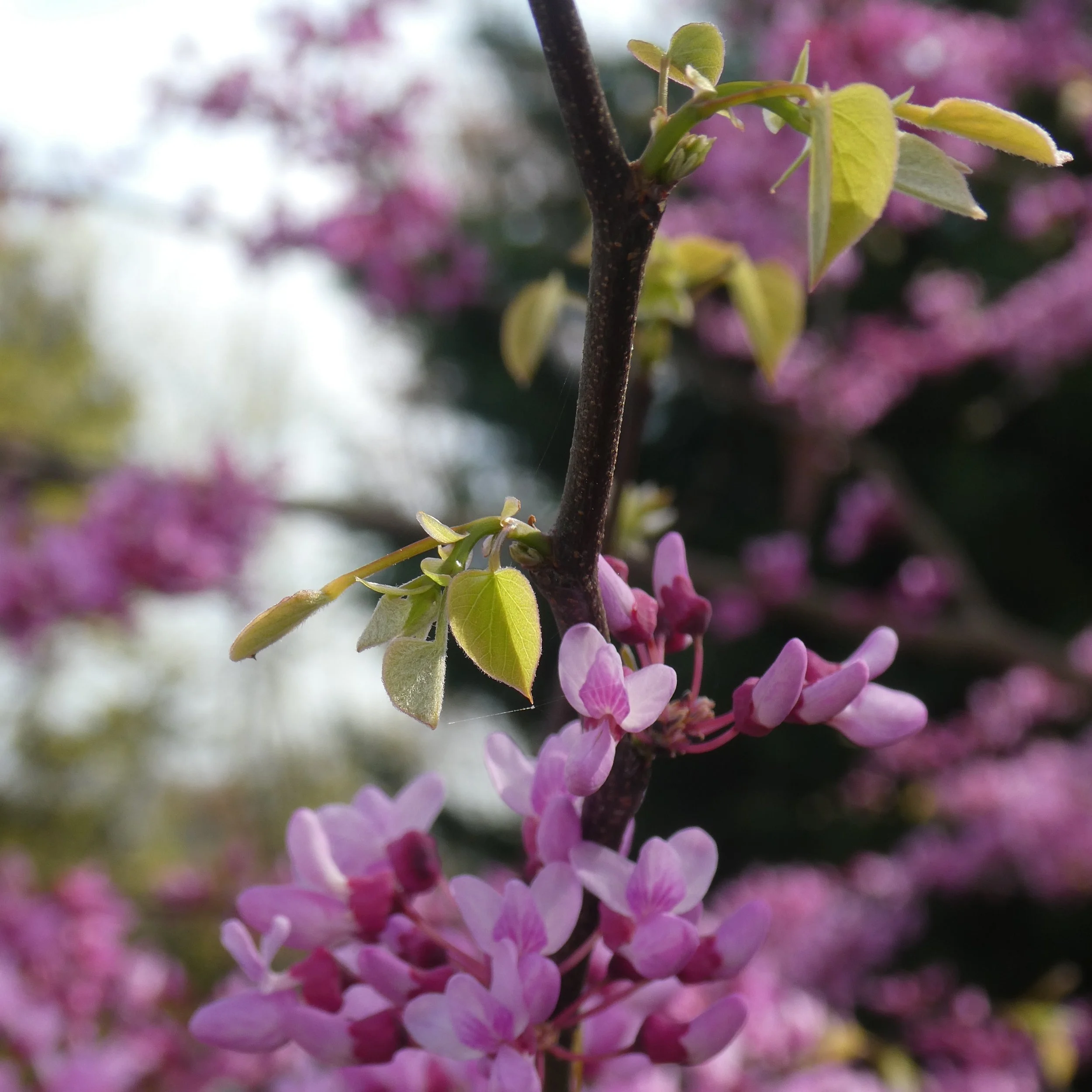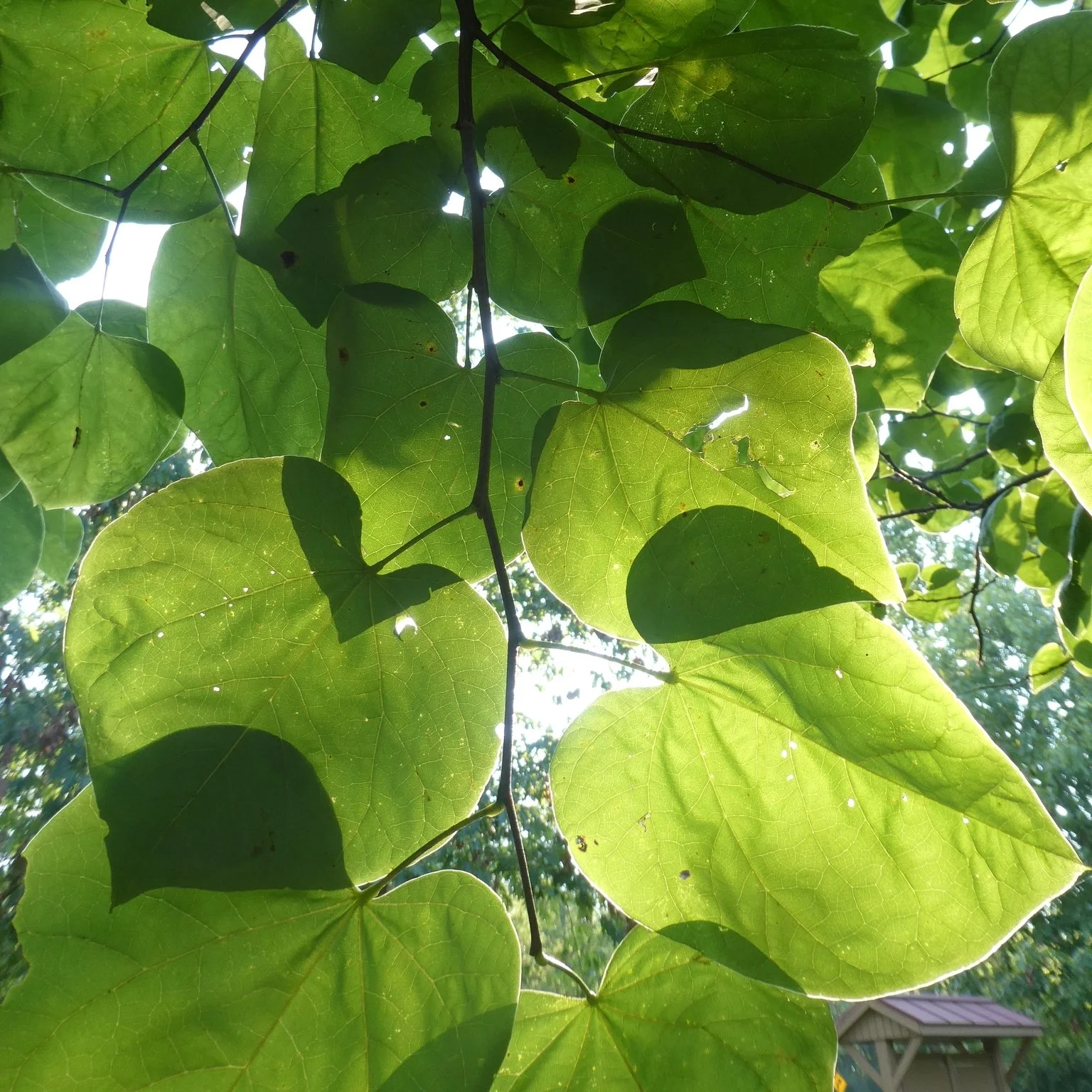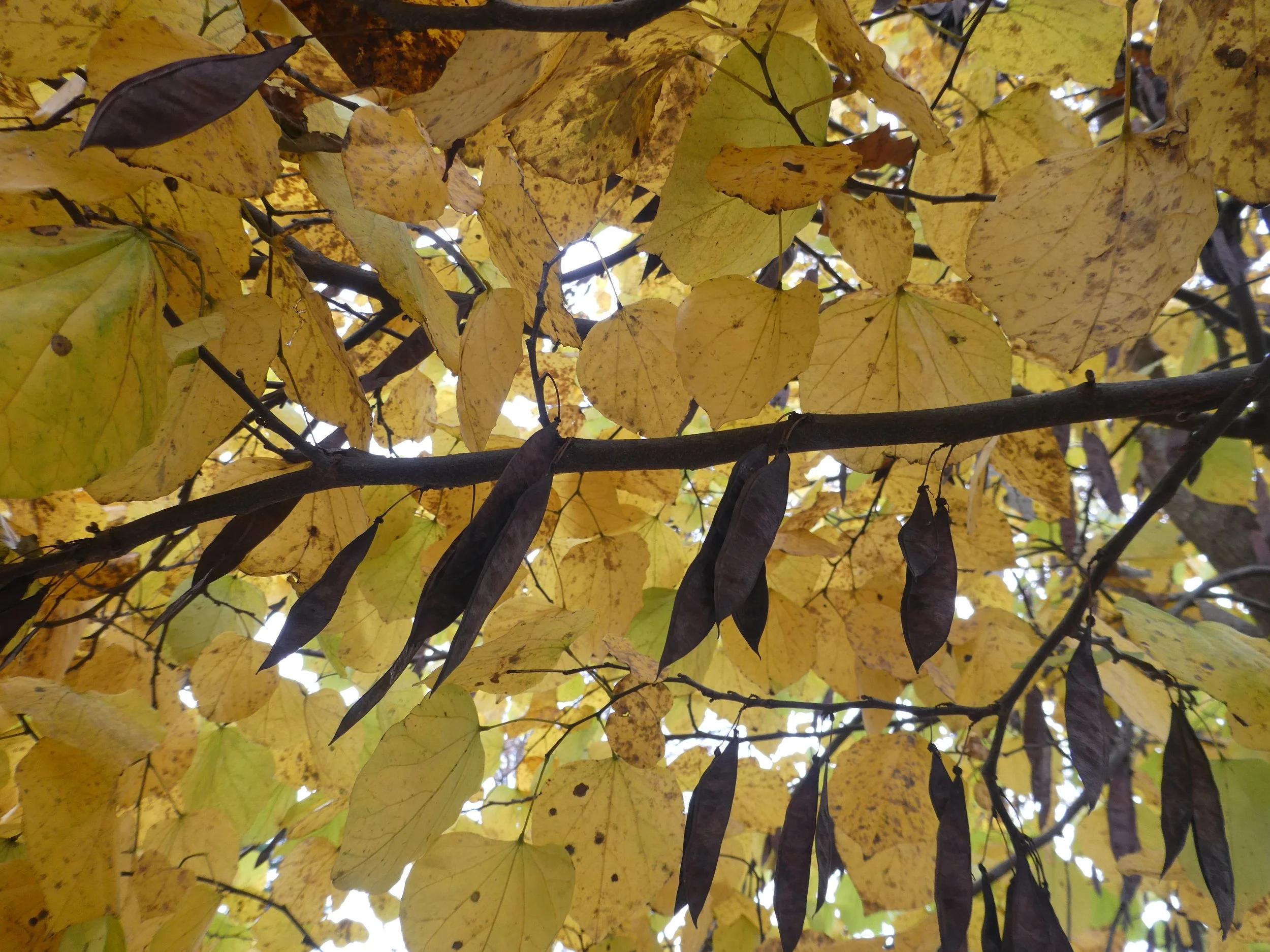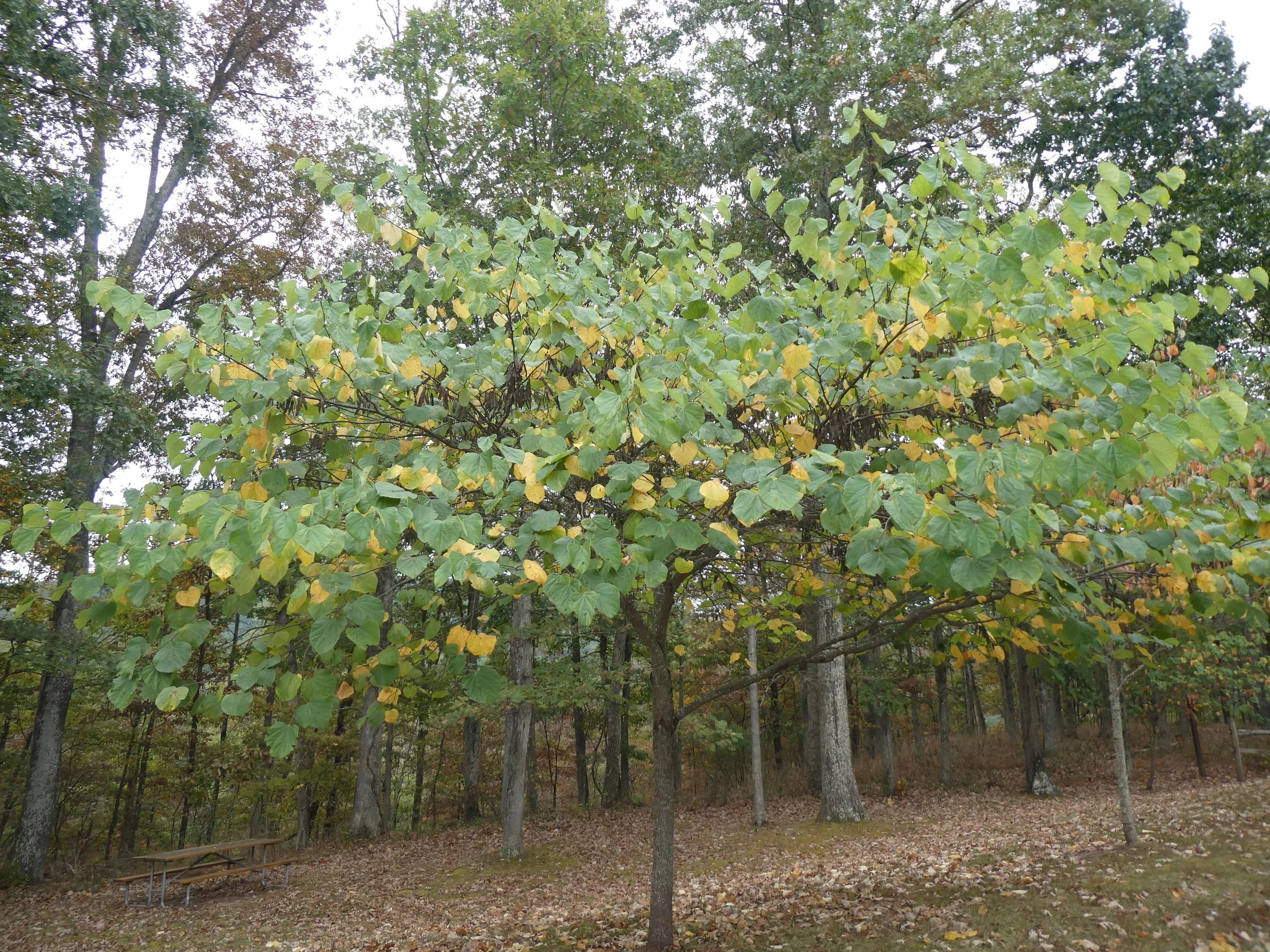Plant of the Week 4: Eastern Redbud (Cercis canadensis)
The Eastern Redbud is an eye-catching tree that offers four seasons of interest, so it is no surprise that it is commonly used in the landscape. An understory tree, it typically only reaches 20 - 30 feet tall at maturity with roughly an equal spread. The form is quite graceful, spreading into a rounded or vase shape. This, along with the colorful maroon-purple bark, gives it appeal in the landscape after the leaves have fallen off.
Swollen magenta buds turn into clusters of pink or light purple flowers that envelop the twigs in early spring. Blooming in March and April, Redbuds offer a stunning display that is amongst the showiest of native trees. In addition to their beauty, they also provide a very important early pollen and nectar source for many pollinators including bumble bees. The flowers can be eaten by humans and have been used in salads or fried. They are also reported to be high in Vitamin C.
Following the flowers are seed pods, typical of many species in the Fabaceae (Pea) family. These flattened pods will mature to a dark brown in the summer and usually contain between 6 and 12 seeds. Songbirds will enjoy the seeds as a summer and fall food source. The pods can remain on the tree through the fall and occasionally into the winter.
Leaves begin with a reddish tinge before unfolding and turning green. The leaves will grow to about 3 - 5 inches and have an elegant heart shape. Eastern Redbud is a larval host and the leaves support 12 different species of moths and butterflies. In the fall, they will turn a nice yellow-gold; some years will be more vibrant than others.
Redbuds are naturally found in a variety of woodlands, including open woods, woodland margins, and areas with limestone soils, as they prefer non acid conditions. It is fairly common throughout the DMV area, so look for this tree in many natural areas as well as in many residential parks or suburban areas.
There are many uses for Eastern Redbud at home or in a garden setting. Use it along patios or as an understory tree in a wooded area. Place it in a lawn to provide some shade or plant several together for an incredible springtime show. It does not usually transplant well, so it should be placed in an area where it will stay permanently.


